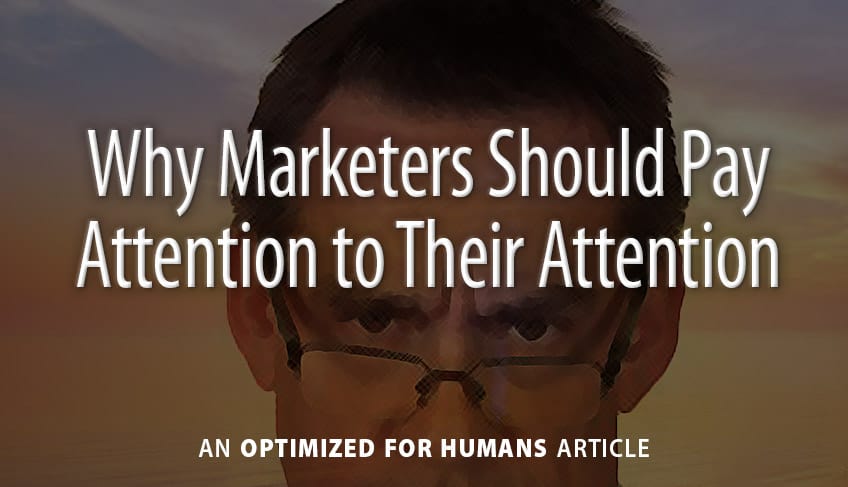
B Y T O M T O R T O R I C I
What I’m talking about here is noticing where your eye goes whenever you land on somebody else’s web page – or really, any piece of marketing media. What captures your attention, making you ‘mentally lean forward’? What’s easy to ignore? And why?
This self-observation exercise takes some discipline to practice consistently. It requires letting go of what we know (or think we know) as sales and design professionals. But it’s taught me most of what I’ve gleaned during my long and varied career in marketing creative.
Allow me to share some of the things I’ve learned. I’m guessing that if you start paying attention to your own attention online, you’ll come to more or less the same conclusions.
What I’ve Noticed About How I See Pages
My eye generally first lands in the top left portion of the page, but not all the way in the corner.
My eye’s path then generally moves down and to the right, if there are no specific elements that hijack my attention.
Items on the periphery of the page, especially at top right and lower left, may be missed entirely.
As I work my way through a page, I tend to just scan it until something catches my eye, then I focus on that. The scan-and-focus pattern repeats until I leave.
What I’ve Noticed About How I See Images
Photos of products that I’m interested in, especially aesthetically pleasing items, grab my eye. So do pix of items in use, or shown in lifestyle environments.
I’m also drawn to images of faces, especially if they’re conveying some emotion.
Images used for ‘atmosphere’, such as industrial scenes for a manufacturing software product, help make for a more visually interesting page. But I don’t spend time actually looking at them.
Like those types of images, icons draw my eye to the written messages that the company wants to convey. This function, it turns out, is more important than what those images and icons actually show.
What I’ve Noticed About How I See Page Elements
My eye tends to go first to the item at the top of the page (but again, not at the very top edge). My eye also tends to go to the most visually prominent item on the page. If they’re the same, I’m immediately drawn in. If not, my eye vacillates and my attention may drop off.
Elements become prominent by being bigger, brighter, or more colorful than everything else on the page. Strong contrast always catches my eye.
If every item is made to stand out, nothing really stands out.
What I’ve Noticed About How I See Written Content
I read headlines far more than I read the text below it. If there’s a subhead between the two, it acts as a visual bridge, and helps draw me into the text.
Bite-size and easily scannable benefit messages give me something to associate with the brand, even if I don’t read every word of text.
If I can see myself in the main page headline, I’m more likely to continue reading than if the focus is just on the company and its products.
If what I read shows that the company truly understands my frustrations and challenges, I tend to be more open to whatever else they have to say.
Now, Start Paying Attention to Your Own Attention
Notice what does and doesn’t make you ‘mentally lean forward’. You’ll start identifying both smart approaches and negligent failures in everything from websites to billboards.
You’ll put that new knowledge to good use by “putting on your buyer’s hat” when developing online and offline marketing media for sellers.
Such insights can help designers go beyond design considerations, and help companies go beyond selling considerations. Because in the end, the only considerations that matter are those of the visitor … whose eyes just landed on your website.
 About the Author: Tom Tortorici is an Atlanta copywriter and web content writer who helps companies make a genuine connection with their audience. His classes and conference presentations have focused on how writing, strategy and design can work together to grab attention and interest even among readers with short attention spans. In addition to working directly with businesses, Tom regularly partners with web designers and marketing agencies.
About the Author: Tom Tortorici is an Atlanta copywriter and web content writer who helps companies make a genuine connection with their audience. His classes and conference presentations have focused on how writing, strategy and design can work together to grab attention and interest even among readers with short attention spans. In addition to working directly with businesses, Tom regularly partners with web designers and marketing agencies.
All Posts/Subscribe >
Info for Businesses >
Info for Designers/Agencies >
Tom Tortorici Inc. | Tom@TomTortorici.com | 770-934-7861 | 3101 Rockaway Rd | Atlanta GA 30341
